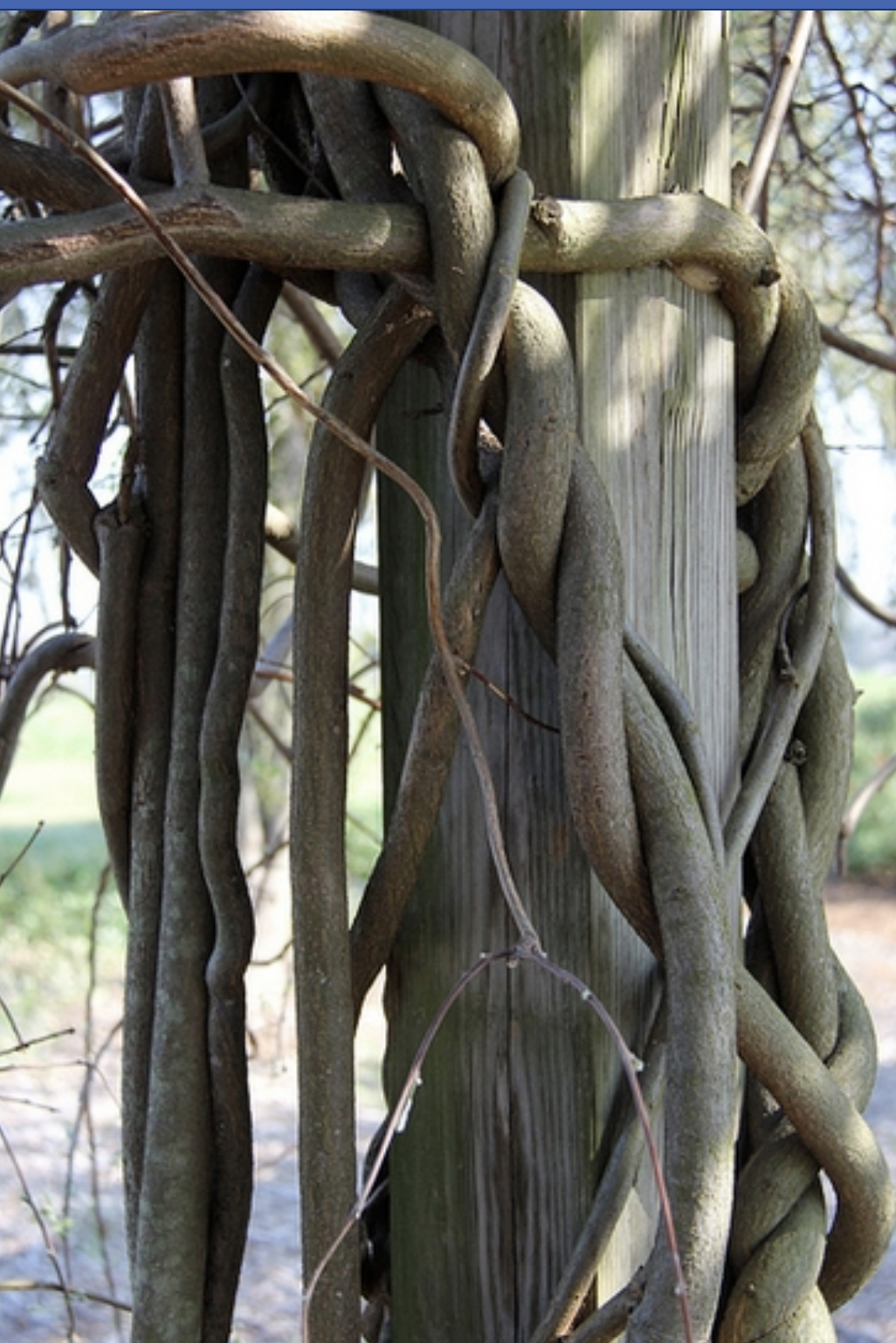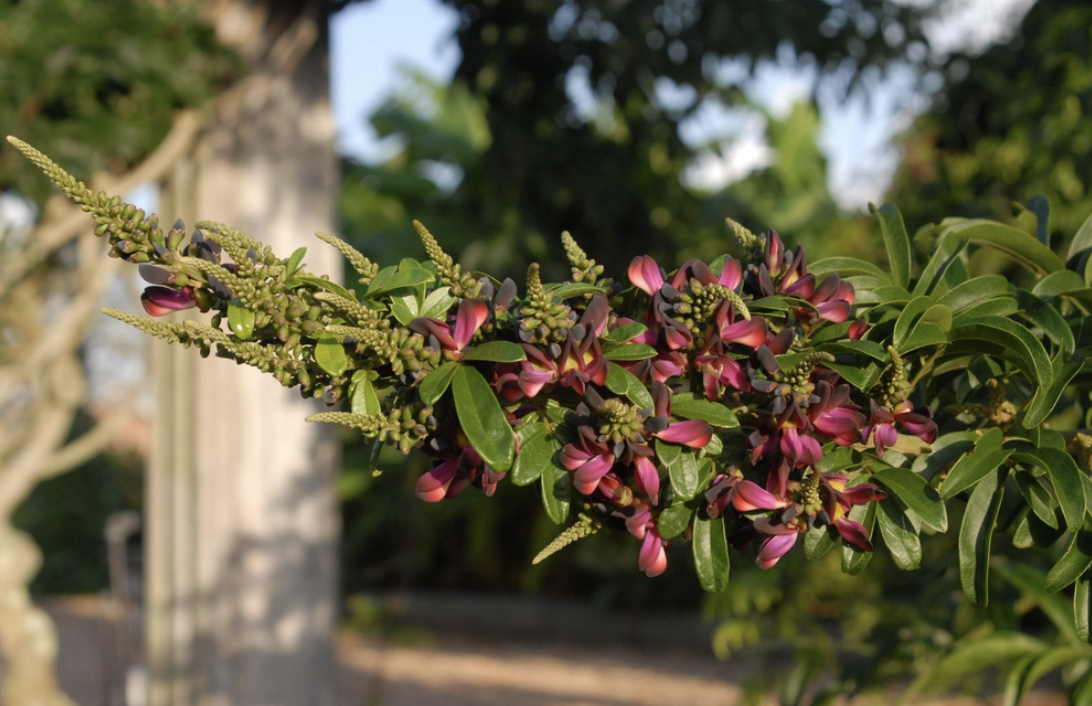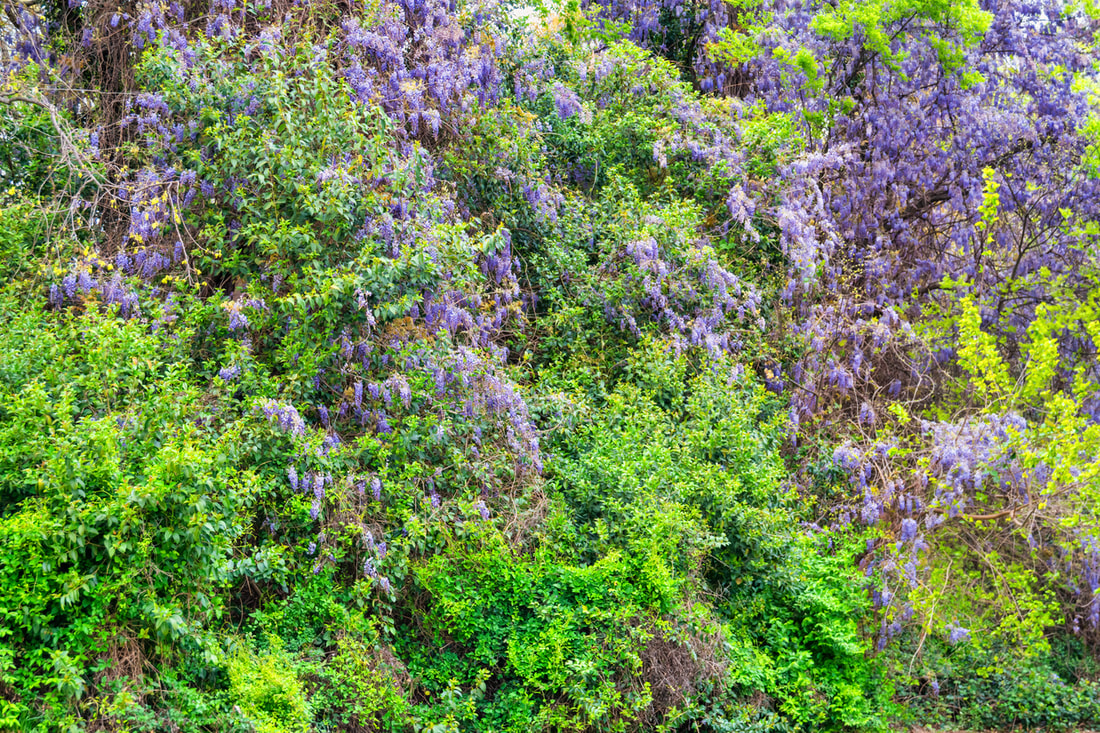|
This time of year, it’s hard not to notice the purple flowers of wisteria dangling from the vines that climb up so many of the trees alongside roadsides and other wooded areas. While beautiful and fragrant, wisteria is a bit of a problematic plant, due to its aggressive, if not downright invasive, nature. But fear not! There are both good and bad wisteria species, so if you’re searching for one to add to your landscape, be sure you get one that will behave. Wisteria famously lent its name to the lane where the main characters of the television series Desperate Housewives lived, which perhaps was cleverer than we realized because wisteria often behaves as badly as the characters on that show. In particular, the Japanese wisteria, Wisteria floribunda, and the Chinese wisteria, Wisteria sinensis, have overstayed their welcome in many a garden. What makes these species of wisteria problematic is the vastness of their spread, and the damage and displacement they can do to other plants as they grow.
surface of the ground and root every few inches, before finding something new to climb up, making them nearly impossible to remove later on, while outcompeting other nearby plants. While these wisteria species are problematic and frequently appear on invasive plant lists, there is a native wisteria, Wisteria frutescens. The native is still an aggressive spreader, and one that will need extremely close attention by any gardener trying to grow it in their landscape, but is generally less problematic than the two Asian species. One particular cultivar of the W. frutescens species known as ‘Amethyst Falls’ is considered to be a bit of a dwarf cultivar. Not only does it grow slower and to a considerably more manageable mature size than any other wisteria, it also has smaller leaves, smaller flowers, and even thinner stems. If you’re desperate for a wisteria on your lane, ‘Amethyst Falls’ is the one that will create the least amount of drama for you and your neighbors.
Matthew Stevens is the County Extension Director and Horticulture Agent for North Carolina Cooperative Extension’s Pitt County Center. If you have questions about this article or gardening in general, please contact the Pitt County Extension Master Gardener Infoline at 252-902-1705. Photo 1: The stem of the Wisteria vine twists around a post. Credit: UGA College of Ag and Env., CC BY-NC 2.0 Photo 2: Wisteria frutescens ‘Amethyst Falls,’ credit by Jim Robbins, CC BY-NC-ND 4.0 Photo 3: Wisteria along highways. Credit: Benedek/iStock
0 Comments
Leave a Reply. |
Matt Stevens
Pitt County Extension Director & Horticulture Agent Archives
July 2024
Categories |



 RSS Feed
RSS Feed